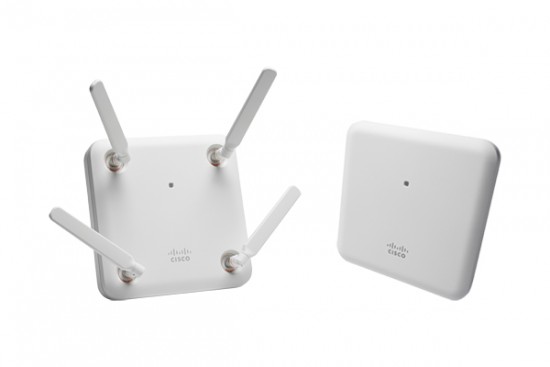The WiFi industries latest standard—802.11ac wave 2—is now upon us. This version of WiFi smashes the Gigabit barrier and promises to raise the performance of wireless network to levels never seen before. 802.11ac wave 2 is ideally suited to meet the new demands created by the influx of wirelessly connected devices being brought into businesses at an unprecedented rate. Make no mistake, for most workers today, the wireless network is not just an alternative way to connect. Rather, it has become the primary access network for most businesses and is creating new experiences and new ways of engaging customers and workers.

There’s another aspect of this WiFi version that is unique, wave 2 is the first WiFi standard that will dictate the architecture of the wired network. Prior to wave 2, the wired network had always outperformed wireless so business could deploy WiFi without much impact to the wired network. With wave 2, the wireless network will have as good—or better—performance than wired switches. Now businesses can enable more devices per user, such as stream 4K video over WiFi, and be assured their Internet of Things deployments go smoothly.
The faster speed of 802.11ac wave 2 coupled with the increased reliance that organizations, large and small, will have on WiFi makes wave 2 a game-changing technology for the wired network. Businesses that deploy wave 2 can no longer think of the wired and wireless network as discrete entities because the wireless network will be heavily dependent on the wired network that supports it. As companies look to migrate to 802.11ac wave 2, they should consider the following aspects of the wired network:
- Available bandwidth. This is a simple math problem. If the speed of the wireless connection is greater than 1 Gig then a single 1 Gig backhaul between the access point (AP) and switch will be a chokepoint on the network. Organizations should connect both of the Gig connections on the AP to create a 2 Gig uplink connection. Alternatively, businesses should consider adding multigigabit switches to their network enabling the APs to connect to the wired network at 2.5, 5 or 10 Gig over standard Cat 5E or Cat 6 cabling.
- Power over Ethernet (PoE) considerations. As wireless continues to evolve, the APs require more and more power. Customers should ensure that the wired switches are PoE+ (30 watts) capable to power APs today and into the future.
- Resiliency of the network. If the wireless network is going to be the primary network then it needs to act and perform like the wired network. This means WiFi downtime is no longer acceptable. A good strategy is to alternate neighboring APs to alternative switches. This way if a single switch experiences a failure, users can still connect over the APs connected to the alternative switch.
802.11ac wave 2 is the fastest, most robust version of WiFi the industry has seen to date. Given the staggering rate of evolution of wireless-only devices and mobile applications, I strongly urge organizations of all sizes to consider wave 2 to be a strategic asset that will change the way we work, learn and engage with one another. Just don’t forget about the wired network, as WiFi success is now dependent on the wired and wireless network working together to create a high-quality experience.
Please feel free to comment, share and connect with us on Facebook, Google+ and @Cisco_Mobility!


CONNECT WITH US